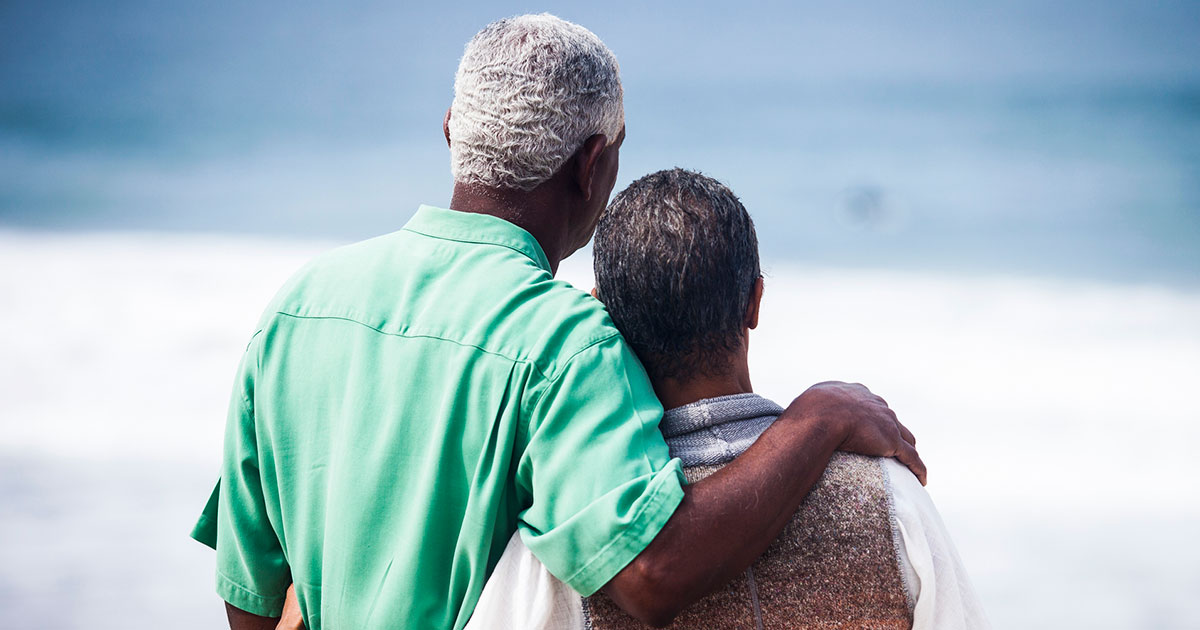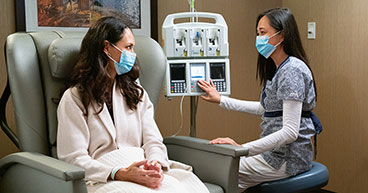
As discouraging as it sounds, there’s nothing you can do to avoid the single greatest risk factor for cancer: getting older. However, you may lessen aging’s impact and reduce cancer risks by taking steps you can control, such as eating healthy, exercising and not smoking. It’s estimated that at least 40 percent of cancer deaths in America may be prevented if people heeded the information about cancer risks.
Also, while people 65 and older may be more likely to get cancer than younger folks, doctors say chances for positive treatment outcomes are increasing. “Aging increases the risk of cancer, but many older patients may still be able to be treated with positive outcomes,” says Laura Farrington, DO, Medical Oncologist at Cancer Treatment Centers of America® (CTCA), Chicago. “We would previously be much quicker to jump to hospice care for some older patients with cancer, but now, with the number and variety of therapies available, we may be able to improve both length and quality of life, even for those in their 80s or 90s.”
The numbers about age
The average age of a patient diagnosed with cancer is 66, and a quarter of all new cancer cases are diagnosed in people between 65 and 74 years old, according to the National Cancer Institute (NCI). Some cancers are more common in young people. For instance:
- Nearly 60 percent of patients diagnosed with acute lymphocytic leukemia are younger than 20. The average age at diagnosis is 15.
- Nearly 79 percent of men diagnosed with testicular cancer are younger than 45. The average age of a patient at diagnosis is 33.
But patients who haven’t turned 20 years old account for only 1 percent of all new cancer cases and an even smaller fraction of cancer deaths.
Usually, cancers are diagnosed in much older adults, the NCI reports. For instance, this is the average age for each of these cancers:
- Bladder cancer: 73
- Lung cancer: 70
- Colorectal cancer: 68
- Prostate cancer: 66
- Breast cancer: 61
While researchers have theories about what may be contributing to cancer’s prevalence in older age groups, conclusive scientific evidence is still lacking. “There is a clear link between age and the likelihood of cancer, but the reasons and cellular mechanisms for this striking correlation are unknown,” Tom Misteli, PhD, director of the NCI’s Center for Cancer Research, said in a 2019 Samuel Waxman Cancer Research Foundation release.
More research is starting to focus on cancer and aging in the face of an ongoing senior population boom. The 65-and-over population will nearly double, from 52 million in 2018 to 95 million in 2060, growing from 16 percent of the U.S. population to 23 percent, according to the U.S. Census Bureau.
The effects of aging
The aging process itself is seen as a key factor in developing cancer. NCI Director Norman Sharpless points to two critical effects of aging:
- The immune system becomes less effective, making it harder to detect and fight infections and diseases, including cancer.
- The body produces more damaged cells, in which proteins and DNA (deoxyribonucleic acid) have deteriorated.
A safeguard called “senescence,” which stops the growth of damaged cells, also becomes more likely to fail as we age. The result is that “accumulating cancer-causing mutations produce the uncontrollable cell growth” that may form or spread cancer, Sharpless says. “The longer we live, the more errors our genes accumulate. Over time, these mutations can lead to cancer.”
Staying healthy as we age
Aging isn’t the only source of cell mutations. Drinking too much alcohol, smoking and getting too much sun, along with many other lifestyle factors and environmental exposures, may also produce mutations that lead to cancer or may worsen your health if you do have cancer. That’s why it’s important to be aware of all risk factors for cancer and eliminate or reduce the impact they have on your body.
“Patients—regardless of age—who are active, don’t smoke and eat well tend to have a better quality of life at baseline, and throughout therapy,” Dr. Farrington says.
Cancer outcomes improving
When it comes to cancer, the medical outlook for older patients is evolving.
In the past, oncologists may have been reluctant to offer some therapies to older cancer patients because they may have had other health conditions or have been less able to tolerate treatment. “Patients with an unhealthy lifestyle with co-morbid conditions, such as COPD, heart disease, diabetes or others, tend to have more side effects from treatment and may have fewer treatment options available,” Dr. Farrington says.
At the same time, recommendations for routine cancer screenings decrease once a person passes 65. That’s usually out of a concern that invasive screenings such as a colonoscopy could have negative side effects, or that even if a cancer is detected, treating it wouldn’t significantly change the person’s life expectancy—and could increase anxiety and have other negative quality-of-life effects.
But as life expectancy has increased, researchers say there’s more to consider than a person’s chronological age. Doctors also have to factor in a person’s physiological age, or how well his or her body has held up over the years. They realize, for instance, that people in their 80s may have very different abilities to handle and treat a cancer diagnosis than younger patients.
New cancer treatments are offering hope for improved outcomes, Dr. Farrington says.“With less invasive surgical techniques, advanced radiation therapy techniques, more targeted therapies, hormone therapies and immunotherapies, there are more treatment options than ever before, especially for elderly patients or those with multiple medical problems,” she says.



